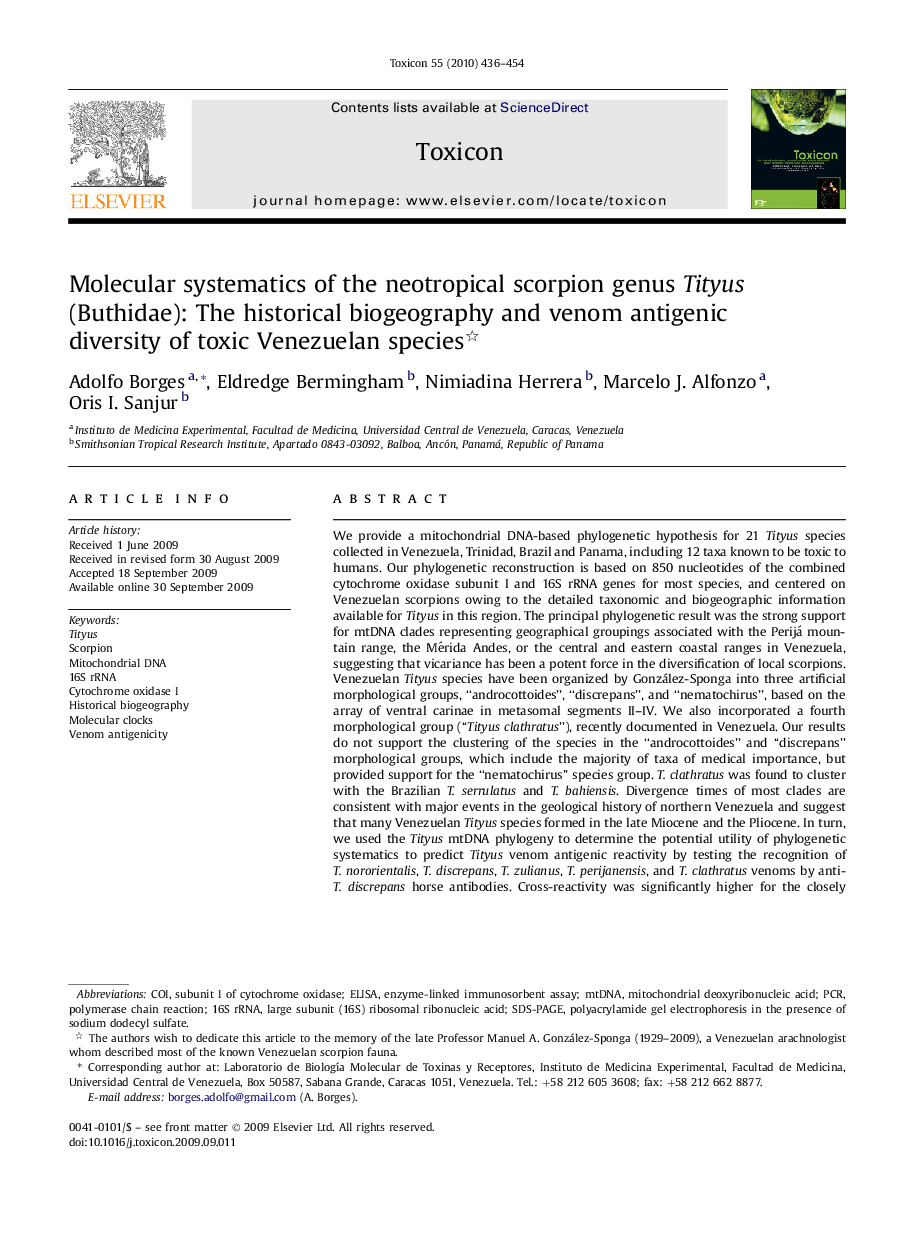| کد مقاله | کد نشریه | سال انتشار | مقاله انگلیسی | نسخه تمام متن |
|---|---|---|---|---|
| 2065341 | 1544179 | 2010 | 19 صفحه PDF | دانلود رایگان |

We provide a mitochondrial DNA-based phylogenetic hypothesis for 21 Tityus species collected in Venezuela, Trinidad, Brazil and Panama, including 12 taxa known to be toxic to humans. Our phylogenetic reconstruction is based on 850 nucleotides of the combined cytochrome oxidase subunit I and 16S rRNA genes for most species, and centered on Venezuelan scorpions owing to the detailed taxonomic and biogeographic information available for Tityus in this region. The principal phylogenetic result was the strong support for mtDNA clades representing geographical groupings associated with the Perijá mountain range, the Mérida Andes, or the central and eastern coastal ranges in Venezuela, suggesting that vicariance has been a potent force in the diversification of local scorpions. Venezuelan Tityus species have been organized by González-Sponga into three artificial morphological groups, “androcottoides”, “discrepans”, and “nematochirus”, based on the array of ventral carinae in metasomal segments II–IV. We also incorporated a fourth morphological group (“Tityus clathratus”), recently documented in Venezuela. Our results do not support the clustering of the species in the “androcottoides” and “discrepans” morphological groups, which include the majority of taxa of medical importance, but provided support for the “nematochirus” species group. T. clathratus was found to cluster with the Brazilian T. serrulatus and T. bahiensis. Divergence times of most clades are consistent with major events in the geological history of northern Venezuela and suggest that many Venezuelan Tityus species formed in the late Miocene and the Pliocene. In turn, we used the Tityus mtDNA phylogeny to determine the potential utility of phylogenetic systematics to predict Tityus venom antigenic reactivity by testing the recognition of T. nororientalis, T. discrepans, T. zulianus, T. perijanensis, and T. clathratus venoms by anti-T. discrepans horse antibodies. Cross-reactivity was significantly higher for the closely related eastern (T. nororientalis) and central coastal (T. discrepans) species in comparison to the distantly related Andean (T. zulianus) and Perijá (T. perijanensis) species. Reactivity of T. clathratus low mol. mass toxic components towards anti-T. serrulatus and anti-T. discrepans antivenoms was low, suggesting that venom components produced by the subgenus Archaeotityus (which encompass “clathratus” species) diverge antigenically from other Tityus scorpions.
Journal: Toxicon - Volume 55, Issues 2–3, February–March 2010, Pages 436–454